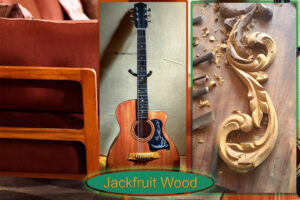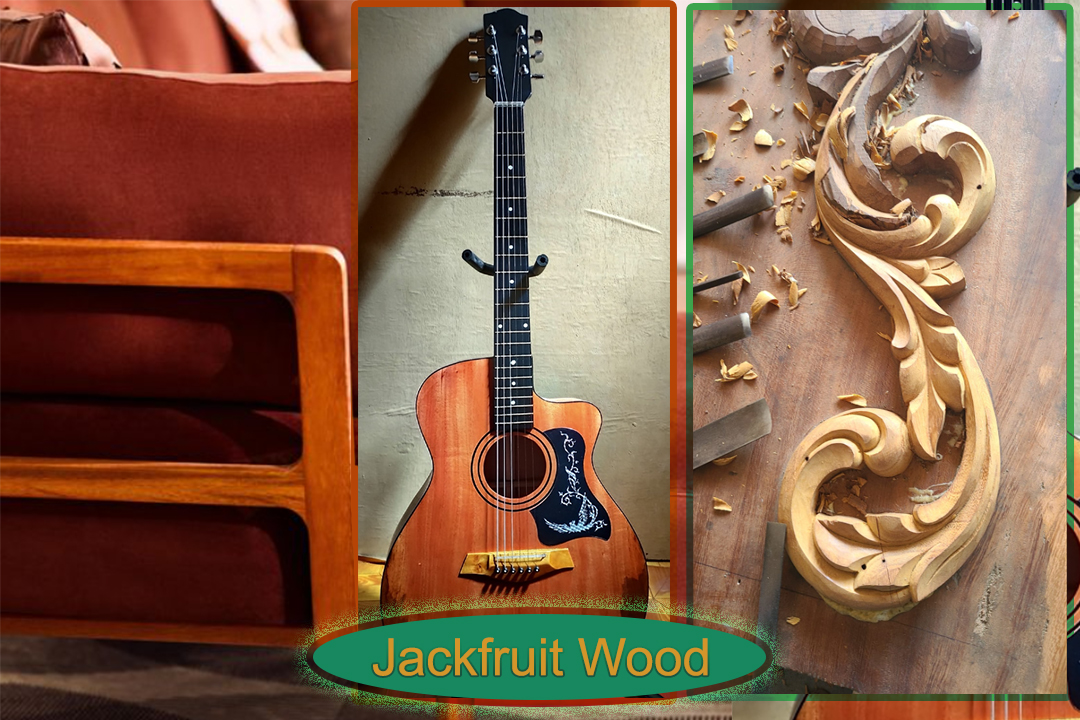There has been a growing interest in sustainable alternatives to traditional furniture materials in recent years. One alternative that has gained attention is furniture made from the jackfruit tree. The jackfruit tree (Artocarpus heterophyllus) is a tropical tree that is indigenous to Southeast and South Asia and distinguished by its huge, versatile fruit. But can the jackfruit tree also be a source of high-quality furniture? Let’s delve into this intriguing question.
The Jackfruit Tree: A Sustainable Resource
The jackfruit tree is a fast-growing species that thrives in tropical climates. It is prized not only for its delicious fruit but also for its durable wood, which is resistant to decay. Unlike other hardwood trees harvested primarily for timber, the jackfruit tree offers a unique opportunity for sustainable furniture production. This is because the tree produces fruit for decades before reaching the end of its productive life; at this point, it can be harvested for its wood.
Which countries grow the jackfruit tree successfully?

1, India: Among the world’s top jackfruit growers is India, with the tree flourishing in the tropical climate of regions such as Kerala, Karnataka, Tamil Nadu, and Maharashtra.
2, Bangladesh: Jackfruit is a common fruit in Bangladesh, where it grows abundantly in the warm and humid climate, particularly in the coastal and hilly areas.
3, Thailand: Thailand is known for its diverse tropical fruits, including jackfruit. The tree grows well in the warm climate of Thailand, especially in the southern regions.
4, Indonesia: Indonesia is another major producer of jackfruit, with the tree thriving in the tropical climate of Java, Sumatra, and Bali.
5, Malaysia: Jackfruit is widely cultivated in Malaysia, where it grows in the warm and humid conditions of both peninsular Malaysia and Malaysian Borneo.
6, Sri Lanka: Jackfruit is a common fruit in Sri Lanka, and it grows in various regions with tropical climates, including the wet and dry zones.
7, Philippines: The jackfruit tree is native to the Philippines and is commonly grown throughout the country, particularly in regions with a tropical climate.
8, Brazil: Besides its native range in Asia, the jackfruit tree has been successfully introduced to Brazil, where it grows in the warm and humid conditions of regions such as the Amazon rainforest and the coastal areas.
These are just a few examples of countries where the jackfruit tree grows successfully. Its adaptability to tropical climates makes it a staple in many regions worldwide with similar environmental conditions.
Characteristics of Jackfruit Wood
Jackfruit wood is known for its strength and durability, making it suitable for various woodworking applications, including furniture making. The wood’s grain interlocks, and its roughness ranges from mild to coarse. , which gives it stability and resistance to warping. Its natural color ranges from pale yellow to golden brown, often with darker streaks or patches, adding to its aesthetic appeal.
Advantages of Jackfruit Furniture
- Sustainability: Harvesting jackfruit wood for furniture production provides a sustainable alternative to traditional hardwoods. Since the tree continues to produce fruit throughout its life cycle, it can be selectively harvested without causing long-term environmental damage.
- Durability: Jackfruit wood is highly durable, making it suitable for furniture built to last. Its lifetime is further increased by its innate resistance to rot and pests, reducing the need for chemical treatments or preservatives.
- Aesthetic Appeal: Jackfruit wood’s unique grain patterns and warm colour lend themselves well to furniture design. Jackfruit wood can be crafted in various styles, from sleek modern pieces to rustic farmhouse-style furniture, to suit different preferences.
- Versatility: Jackfruit wood can create multiple furniture pieces, including tables, chairs, cabinets, and more.It is appropriate for both structural and ornamental furniture elements due to its strength and stability.
Considerations and Challenges
Become a part of our community of admirers and share your passion for sustainable design with like-minded individuals. Engage with us on social media, participate in discussions, and explore the latest trends and innovations in eco-conscious furniture design.
Conclusion,
In conclusion, the jackfruit tree holds promise as a sustainable source of high-quality furniture material. Its durable wood and careful harvesting and craftsmanship make it a viable option for eco-conscious consumers seeking unique and long-lasting furniture pieces. Although there are issues and difficulties with using jackfruit wood, the potential benefits in terms of sustainability and aesthetics make it a compelling choice for furniture makers and consumers alike.
As we look for creative methods to adopt environmentally friendly methods and lessen our impact on the environment, furniture made from the jackfruit tree represents a meaningful step towards a more eco-friendly and responsible approach to interior design and home furnishing.
https://www.youtube.com/watch?v=IP1RUBZ9LCU
FAQ
1. What is furniture made from the jackfruit tree?
Furniture made from the jackfruit tree is crafted using the wood of the jackfruit tree, known for its strength and durability.
2. Why is there interest in furniture made from the jackfruit tree?
There’s growing interest in sustainable furniture materials, and the jackfruit tree offers a promising alternative. Its wood is durable and resistant to decay, making it suitable for long-lasting furniture.
3. What are the characteristics of jackfruit wood?
Jackfruit wood is solid and durable, with a natural colour ranging from pale yellow to golden brown. It has a unique grain pattern and is suitable for various furniture styles.
4. What are the advantages of furniture made from jackfruit wood?
- Sustainability: Jackfruit wood provides a sustainable alternative to traditional hardwoods because the tree continues to produce fruit throughout its life cycle.
- Durability: It’s highly durable and resistant to rot and pests, minimizing chemical intervention requirements.
- Aesthetic Appeal: Its warm tone and distinctive grain patterns enhance its aesthetic appeal, making it suitable for different furniture designs.
- Versatility: Jackfruit wood can be used to create various furniture pieces, including tables, chairs, and cabinets, due to its strength and stability.
5. What are some considerations and challenges?
- Availability: Access to sustainably harvested jackfruit wood may be limited in some areas, requiring effective management and conservation efforts.
- Processing and Workability: Jackfruit wood can be challenging due to its interlocking grain, requiring special tools and techniques.
- Cost: Furniture made from jackfruit wood may be more expensive due to availability, transportation, and labour.
6. Is furniture made from the jackfruit tree a sustainable choice?
Yes, it is. The jackfruit tree offers a sustainable source of high-quality furniture material due to its durable wood and careful harvesting practices.
7. Why choose furniture made from the jackfruit tree?
It’s a meaningful step towards eco-friendly interior design and home furnishing, aligning with values of environmental responsibility and quality craftsmanship.
.
